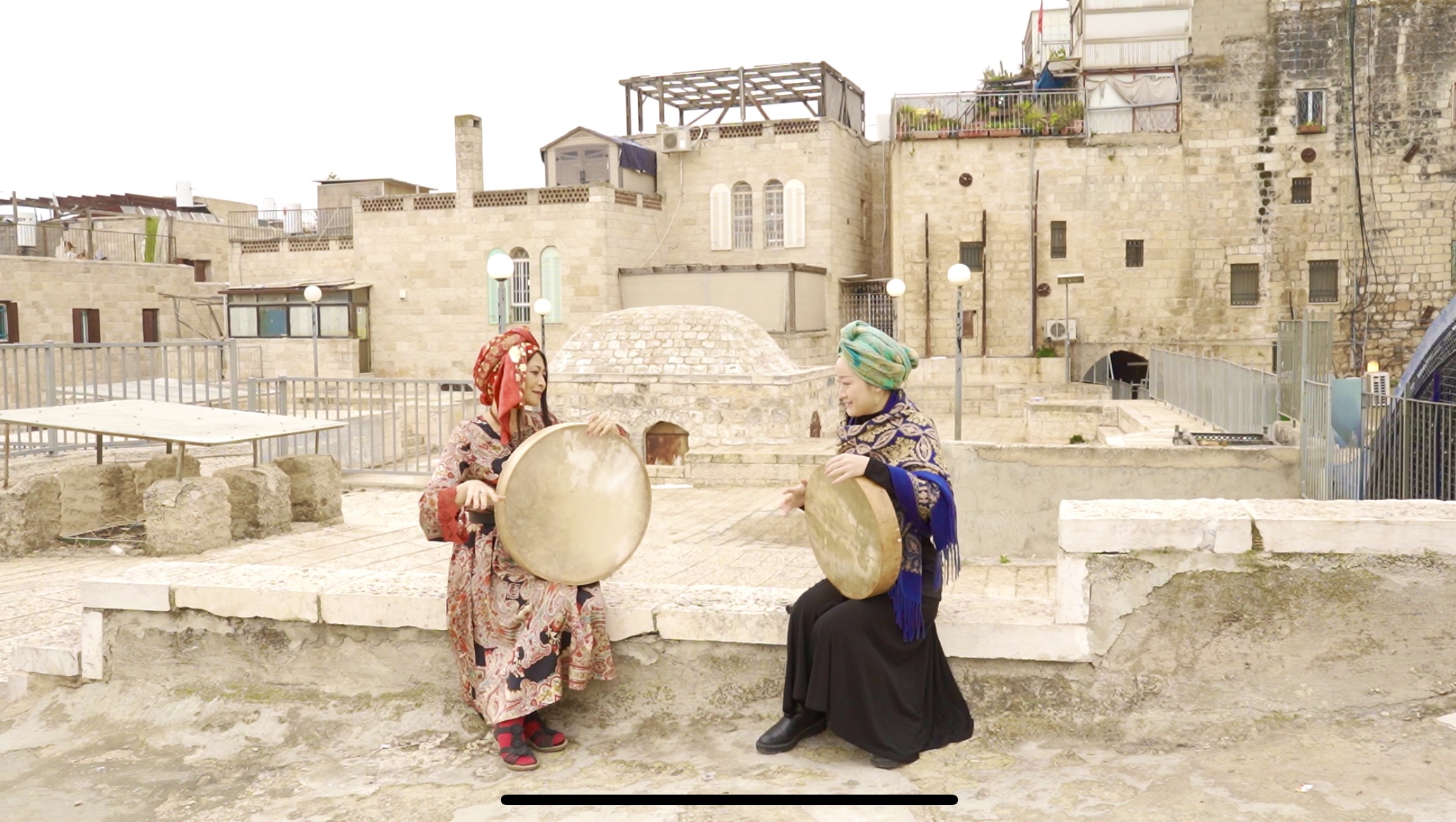
Ke Guo filming music video with Japanese musician Okaniwa Yayoi in Jerusalem’s Old City.
By Ke Guo
Sephardic music has traveled throughout time and place with the migration of the centuries-long Sephardic diaspora. Thus, the extremely diverse sonic impressions of the music perplex us. There are influences from musical cultures around the Mediterranean Sea, from regions in today’s Spain, Morocco, Algeria, Bulgaria, Turkey, Greece, Syria, and many more countries. Additionally, the way Sephardic music is understood can differ even depending on the family heritage of the listener.
I am fascinated by the diversity embodied in the sound of Sephardic music and it has spurred my research on the topic, looking to answer the simple question, “What is Sephardic music?” This interview series intends to present the complexity of Sephardic music scenes to the general public, through conversations with scholars, musicians, educators, and people in and out of Sephardic communities worldwide.

Ke Guo visiting Izzet Bana, the director of Sephardic children’s choir “Estreyikas” in Istanbul.
I am thrilled to share the first two interviews, as a preview of the videos in the series [set to be completed in Spring 2023] with Dr. Eliezer Papo and Izzet Bana. Speaking with me during my travels to Jerusalem, Papo focused on his knowledge and experience as a Rabbi trained in the former Yugoslavian land and as a scholar in Hebrew literature. I next traveled to Istanbul to meet with Izzet Bana who shared his perspectives on teaching Sephardic music to the public and young generations as a touring musician and a choir director in Turkey. Through these in-depth discussions, this interview series will hopefully inspire the general public to think about music in the diaspora in a critical and respectful way.
 Ke Guo is a Ph.D. student in music education with a focus in ethnomusicology at the University of Washington’s School of Music. She was born in Wuhan, China, and studied applied mathematics at UCLA for her B.S. degree. She then obtained an M.S. in management science and engineering from Stanford University and an M.M. in music education from San José State University. Before pivoting into music education, she worked in the consulting and tech industry. Her research in world music education and ethnomusicology has covered topics in both Chinese music and Sephardic music. As a vocalist and multi-instrumentalist, she is also active as a concert performer, and has offered individual concerts as well as collaborative concerts in America and Europe. Focusing on the topic of the worldwide transmission and reception of Sephardic music both within and outside of the Sephardic community, she is excited to conduct future field research in the Iberian Peninsula, Turkey, and other countries around the Mediterranean.
Ke Guo is a Ph.D. student in music education with a focus in ethnomusicology at the University of Washington’s School of Music. She was born in Wuhan, China, and studied applied mathematics at UCLA for her B.S. degree. She then obtained an M.S. in management science and engineering from Stanford University and an M.M. in music education from San José State University. Before pivoting into music education, she worked in the consulting and tech industry. Her research in world music education and ethnomusicology has covered topics in both Chinese music and Sephardic music. As a vocalist and multi-instrumentalist, she is also active as a concert performer, and has offered individual concerts as well as collaborative concerts in America and Europe. Focusing on the topic of the worldwide transmission and reception of Sephardic music both within and outside of the Sephardic community, she is excited to conduct future field research in the Iberian Peninsula, Turkey, and other countries around the Mediterranean.







Several years ago, I was a member of the committee that selected performers for the Jewish music festival at the JCC In Detroit Michigan. We had a number of discussions as to what was Jewish music. The controversy was always what was it’s popular and people would be wanting to pay money to hear, versus what was undoubtely Jewish music.
Was the music from the play “Fiddler on the roof” Jewish music?, We’re songs from a popular Jewish singer Jewish Even though I considered klezmer true Jewish music , the committee did not support bringing klezmer to the Jewish music festival since past klezmer concerts were poorly attended.